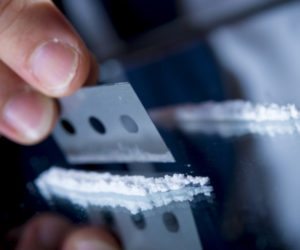Bath Salts Addiction

Answers to common questions about bath salts addiction and abuse
Understanding bath salts addiction may help you get a loved one into treatment before they suffer a serious, life-threatening reaction. The mention of bath salts addiction may conjure images of heated soaks with Epsom salts to ease the aches and pains of physical activity. The reality is much less benign. The term “bath salts” refers to synthetic cathinones, which are powerful psychoactive stimulants that are labelled as bath salts to avoid detection by drug enforcement officials. Sold online and in smoke shops, these drugs mimic the effects of cathinone, a stimulant found in the khat plant. Addiction to bath salts can have devastating effects on users’ health, ranging from nosebleeds and paranoia to kidney failure and even death.
How are bath salts used?
Bath salts create feelings of euphoria and stimulation, producing a high that is similar to amphetamines, cocaine, and meth, but immensely more intense. The National Institute on Drug Abuse reports that a recent study found that one common synthetic cathinone, 3,4-methylenedioxypyrovalerone (also known as MDVP), affects the brain in a manner similar to cocaine but is 10 times more powerful. Bath salts can be ingested, smoked, snorted, or injected. The effects of bath salts appear quickly after the drug is used, typically within 15 minutes to 45 minutes, and last between 2-5 hours.
Are bath salts legal?
No. Synthetic cathinones are typically labelled as bath salts, plant food, or jewelry cleaner and may be stamped “not for human consumption” to avoid detection by the DEA, but the substances that make up their base are illegal. The Synthetic Drug Abuse Prevention Act of 2012 permanently classified mephedrone, MDPV, and methylone, the three synthetic cathinones that form the base of bath salts as Class I or Schedule I Substances. Drugs in this category are illegal and considered to be highly addictive, with no beneficial or useful effects.
Are the rates of bath salts addiction growing?
Based on calls to US poison control centers, addiction to bath salts actually seems to be decreasing, but the drugs still pose a serious problem. There were 382 calls to poison control centers for bath salts exposure in 2016, which represents a significant decrease from 2011, when calls exceeded 6,000. Typical users are between 20 and 29 years of age, many of whom turn to bath salts to get high in the belief that these substances cannot be detected in substance abuse tests. While many standard toxicology tests are not designed to detect synthetic cathinones, more extensive and sophisticated lab tests do reveal the presence of several of the most prevalent synthetic cathinones.
What are the side effects of baths salts?
Using synthetic cathinones creates dangerous physical and psychological side effects. Bath salt side effects are similar to those experienced with other stimulants, such as lowered inhibitions, increased sociability and sex drive, panic attacks, paranoia, confusion, and hallucinations. The physical side effects of bath salts include dilated pupils, increased heart rate and blood pressure, nosebleeds, sweating, nausea and vomiting, and seizures.
What are the symptoms of bath salt addiction?
Over time, the symptoms of bath salts abuse become severe. Users can develop acute psychosis and excited delirium, which is characterized by extreme agitation and violent behavior. These symptoms can result in dehydration, breakdown of skeletal muscle tissue, and kidney failure. Once bath salts addiction takes hold, users experience intense withdrawal symptoms unless they ingest synthetic cathinones on a regular basis. These symptoms include depression, anxiety, sleep disturbances, paranoia, and suicidal thoughts, as well as powerful cravings for the drug.
Treatment for bath salts addiction
At the present time, there are no medications to treat addiction to synthetic cathinones. The best results have been seen with a stay in a residential addiction treatment center where individuals receive focused addiction care. With a combination of cognitive-behavioral therapy, contingency management, motivational enhancement therapy, bath salts addicts can learn relapse prevention techniques that will allow them to achieve long-term recovery.
If you or a loved one needs help with abuse and/or treatment, please call the WhiteSands Treatment at (877) 855-3470. Our addiction specialists can assess your recovery needs and help you get the addiction treatment that provides the best chance for your long-term recovery.
